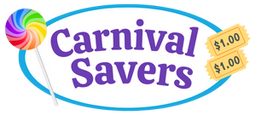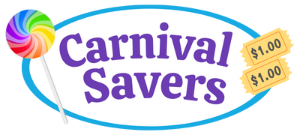Carnival Savers is passionate about keeping children safe!
Our Toys Are Safety Tested:
Although we are not a direct importer, we choose US Suppliers who use 3rd party safety testing of all toys to ensure all toys are within proper standards set from the Consumer Products Safety Commission. (See details below)
Toddler Safe Toys:
We are happy to share that we have a new section on our website where we sell toys that are safety tested for children of all ages! Toddlers and even babies can now receive toys from your event that are fun and safe! See our Toddler Safe Toys section and be sure to add some to your event so everyone can enjoy!
Helpful Tip:
Some fast food restaurants with children's meals, have inexpensive toys safe for toddlers -- so you could ask for a small donation of those toys (or even offer to purchase the toys) and have the toddler safe toys at the carnival booths that are popular with the little ones (fishing booth, duck pond, treasure dig etc.) Be sure to tell your booth volunteers so they know to ask the parents if they would prefer the toddler safe toy!
You Can Help Us Too!
You can help us keep children safe by understanding about toy safety and having alternative toys for children under the age of three at your event!
Most toys are NOT suitable for children under the age of three years.
For a toy to be considered safe for a child under the age of three years, it needs to be practically indestructible, be made of materials that are safe to to be chewed on, has round edges, and not be so small that it could become lodged in a child's throat. There are also special requirements with regard to the length of strings or cords that could become entangled.
Think of the "Fisher Price" type toys for toddlers…
They will not fit in a toilet paper roll (size test), there are no sharp edges, no long cords or stings, and if you stepped on them or dropped them, they would not break!
For more information about toy safety, visit the Consumers Product Safety Commission at www.cpsc.gov
Some of our toys may be considered safer - like stuffed animals and inflatable toys, but we would recommend sticking to completely safe toys and snacks designed for toddlers like goldfish type crackers, a box of animal crackers or even toddler safe toys designed for children under the age of three years.
Our Suppliers Safety Statement:
"We regularly test our product before it arrives at our warehouses to validate that it meets or exceeds applicable safety and regulatory requirements, including the Consumer Product Safety Improvement Act of 2008 ("CPSIA") and its regulations.
These are some of the steps we take:
- We actively engage our suppliers on product safety matters by:
- Instructing our suppliers that all product shipped to us is required to meet or exceed all applicable standards
- Providing information and training related to safety requirements
- Conducting factory inspections.
- Regularly reviewing suppliers' compliance.
- Our product testing is performed by one of the world's largest independent consumer product testing laboratories.
- Products are tested according to standards established by the CPSC, American Society for Testing and Materials (ASTM), and other state and federal agencies, as applicable.
- A proper Children's Product Certificate or General Certificate of Conformity accompanies the shipment of products we purchase.
In addition to the CPSIA, there are numerous other federal product safety laws and regulations which Fun Express observes. Occasionally, individual states adopt regulations that are different from applicable federal requirements. In order to accommodate such unique situations, Fun Express may adjust its product offerings or make products unavailable to customers who reside in such states."


